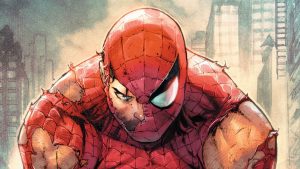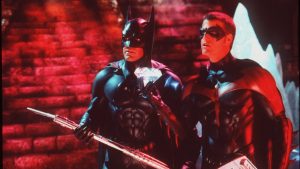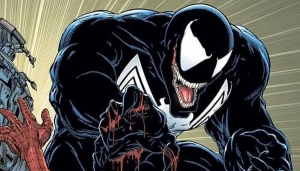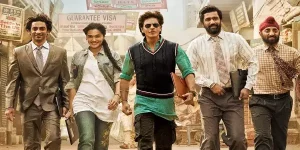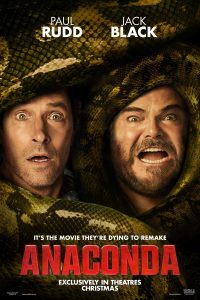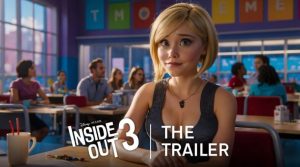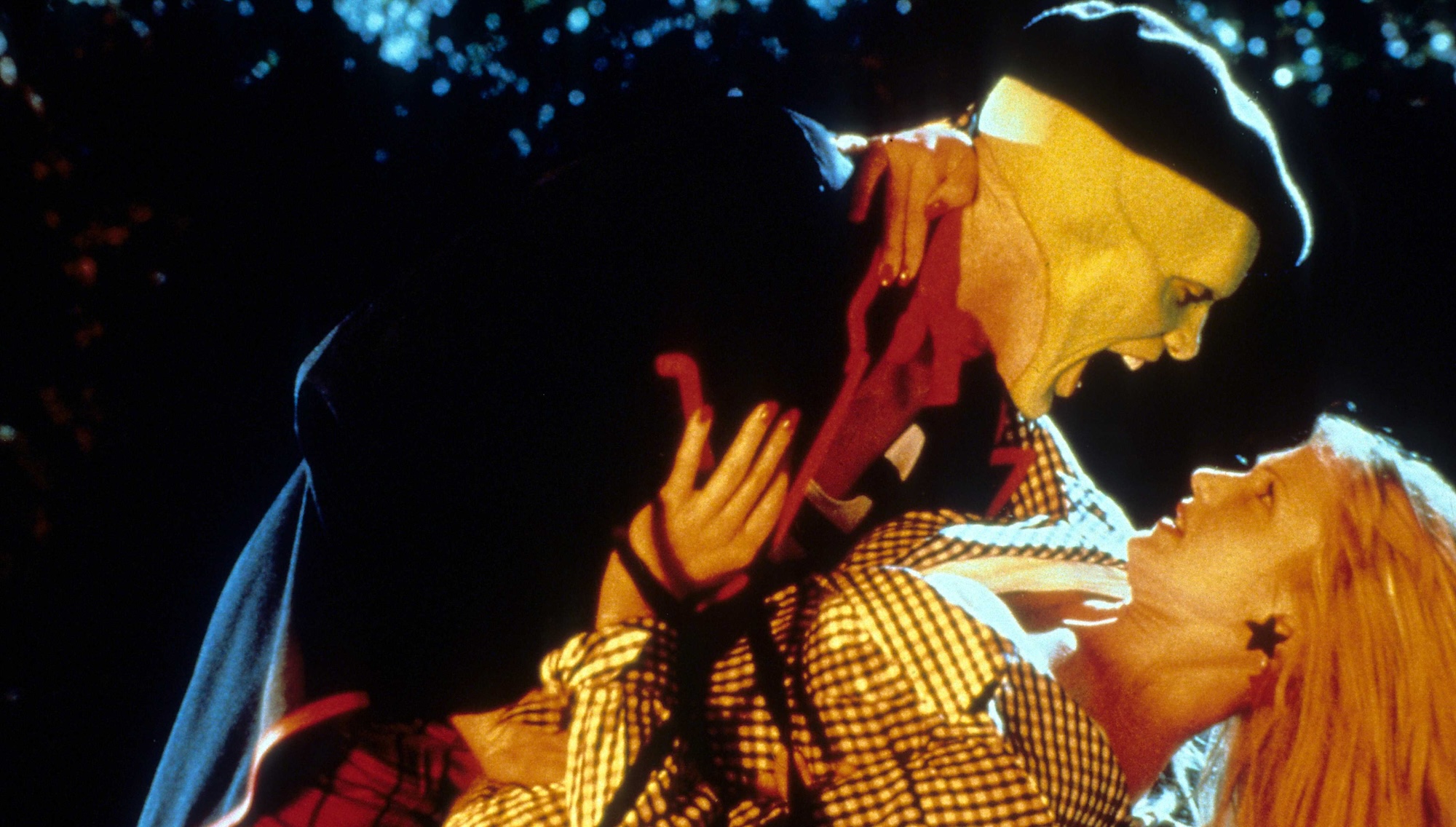
Jim Carrey might have been a familiar face to fans of the sketch comedy series In Living Color and anyone who stumbled upon future cult favorites like Once Bitten and Earth Girls Are Easy, but to most regular moviegoers he was a virtual unknown. That all changed in 1994 with a trio of hits built on his dizzying array of facial expressions, catchphrases, and impeccable comedic timing.
Ace Ventura: Pet Detective might have been his first big hit, and Dumb and Dumber is an enduring favorite, but The Mask represents the oddity in the pack. It’s a big, colorful comic book movie that’s aimed at kids and adults alike. Yet it also boasts a darker quality bereft from most family movies.
That darkness is perhaps best embodied in the film’s main villain, Dorian Tyrell, a vicious gangster played with aplomb by Peter Greene, who sandwiched the role between similarly memorable turns in Pulp Fiction and The Usual Suspects.
That darkness was part of The Mask’s DNA though. Created by Mike Richardson and developed by Doug Mahnke and John Arcudi, it began life as a Dark Horse comic book in 1991 and originally depicted Carrey’s character, Stanley Ipkiss, as the protagonist in a darkly comedic one-man rampage against all who wronged him. Imagine something of a cross between Michael Douglas’ Falling Down and Beetlejuice, and you’re still not close to capturing the bloody mayhem that unfolds.
Elements of the source material remain in the film. Stanley exacts revenge on the two mechanics who rip him off, but rather than force car parts up areas so severely they need the “best proctologist in town” to remove them, in the comics, both are very much dead, having had car parts forced down their throats to graphic effect. In truth, The Mask movie adaptation could have gone even further than that were it not for the input of director Chuck Russell.
“I had seen the Dark Horse comic at one of my favorite comic book stores and thought it was fascinating,” Russell tells Den of Geek. “It had this very striking cover.”
Unbeknownst to him at the time, though, New Line Cinema had also taken note and after optioning the material, the studio wanted Russell to direct the film adaptation. Russell had most recently directed the gory underrated 1988 remake of The Blob, which itself followed A Nightmare on Elm Street 3: Dream Warriors . The latter remains a fan favorite that’s often credited as helping the franchise get back on track.
Stanley Is No Freddy
To New Line Cinema, Russell was perfectly positioned to translate the bloody mayhem of The Mask to the big screen, especially as early drafts pitched the concept as a dark and disturbing horror movie. In an interview with Forbes, creator Richardson recalled one aborted version focusing on “a mask-maker on the edge of town, cutting faces off corpses and putting them on teenagers and turning them into zombies.”
Russell had other ideas though.
“The early drafts were horror and to me that was a problem,” Russell explains. “While that image of putting a mask on that comes to life was unique and a big part of the attraction, when you make the resulting character a wisecracking killer, which is what he was in the comic, it’s a little too similar to Freddy Krueger. When I looked at what they were developing I concluded that, at best, it would be very derivative of A Nightmare on Elm Street. For example, they would have had The Mask pulling an ax out of a magical pocket, making some kind of pun and then killing them.”
Eager to avoid being pigeonholed as a horror director, Russell saw an opportunity to inject a little humor into proceedings. “Honestly, I loved comedy,” he says. “I had produced Back to School starring Rodney Dangerfield and was involved in the final script, and finding great stand-up comedians for some of the secondary roles.”
Russell worked closely with filmmaker Harold Ramis on the movie, who he credits as being something of a mentor, and saw an opportunity in The Mask to do his own Ghostbusters-style riff on the source material. So he decided to take a stab at pitching The Mask as a full-on comedy.
“I came in with the girl, the dog, the nightclub, and really just playing up the Stanley Ipkiss love story,” the director says. Russell wanted the film’s main female character, Tina Carlyle, to be rewritten from a villain to a love interest and, as an avid animal lover, felt Stanley’s dog Milo should play a more prominent part. The decision to focus on a nightclub and swing music was also a personal one.
“My grandpa was a Dixieland trumpet player and when my grandparents babysat me, I heard all that Cab Calloway music as a child,” Russell explains. “ The whole thing with the yellow zoot suit was Cab Calloway inspired.”
Russell likewise hit upon the idea of imbuing the film’s violence with a cartoonish quality inspired by the great Tex Avery’s work.
“The original Tex Avery cartoons were very edgy with titles like Red Hot Riding Hood and the Wolf,” he says. “It just seemed to come together in my head that if we wanted to do a comedy version, the character of Stanley Ipkiss had to be a cartoon fan and thematically those were anarchist cartoons.”
The response from the studio was almost immediate: “No thanks.” But a few months later they came back, having hit a deadend with ideas for a horror movie. So it became a yes.
There was still occasionally a little gentle pushback on his plans though, not least when it came to the music. He remembers someone at New Line Cinema saying, “What’s wrong with you Chuck? We can get you Aerosmith!” Russell’s glad he said no. “That would have made it just another movie. I give credit to Bob Shaye and Mike DeLuca for supporting that.”
Discovering Cameron Diaz and Casting Jim Carrey
Though Russell had a fresh take on the source material, he’s happy to admit none of it would have happened were it not for Jim Carrey. “He was the catalyst for it all,” Russell says. “I remember saying to the studio ‘We need to make this a comedy. There’s this guy, Jim Carrey, and if we make it with him we’ll have a movie unlike anything else out there.’” Russell was familiar with Carrey’s work from In Living Color and his stand-up work. The filmmaker saw Carrey’s brand of “edgy” comedy as perfectly pitched for a movie like The Mask. While New Line Cinema thought actors like Nicolas Cage, Rick Moranis, and Matthew Broderick might be suited to the role, Russell only had eyes for Carrey.
“I had to make a shortlist of potential stars, but Jim was the inspiration,” Russell recalls. “It was always only Jim to me and when he first read the script, I remember he said ‘it was like it was written’ for me, and I had to explain that it really was.”
But if landing Carrey in the starring role felt like destiny, the casting of a then-unknown Cameron Diaz as the aforementioned love interest and lounge singer Tina Carlyle must have been fate. Several actresses Russell would rather not name read for the role. But Diaz, by contrast, was a model-turned-actress hoping for a two-line part in the movie that could lead to bigger things.
“I literally saw her photograph in a pile and said, ‘Bring this girl in.’ I was told she had never acted. It was almost unprofessional to consider her for a lead.”
Nevertheless, Russell had her come in and read for the part. A few times, in fact.
“I had Cameron back eight times. She read with Jim. I had her do some improvisation. She could hold a room with Jim Carrey and what was fascinating about the process was that Jim was better in his readings with Cameron, so there was chemistry from the very beginning.”
Diaz recalled the nerves that came with the auditions in a 1994 interview with Entertainment Weekly: “I was ready to have a nervous breakdown… I couldn’t eat, I couldn’t sleep. I got an ulcer.”
Not everyone was initially sold on the idea of Diaz, however.
“The producers were very skeptical and quite concerned,” Russell says. One of the main worries centered on an apparent lack of star power in the movie. At the time, Carrey was yet to score his first big hit with Ace Ventura, and some executives felt a more notable female lead was needed.
“They didn’t have the kind of star name that would match the budget,” Russell says. “They were hoping to get me to go with a better known name, and Anna Nicole Smith was one producer’s favorite.”
The late model and actress was making a name for herself in the world of comedy at the time, having recently filmed scenes for a part in Naked Gun 33 ⅓. Russell recalls meeting with her once to discuss the part and the “funny charm” she exhibited in that encounter, but once Diaz was in the frame, as with Carrey, he was determined to press ahead.
“I videotaped them reading every one of their scenes together and showed it to the producers,” he recalls. “I knew we had it. Eventually they gave in.”
VFX, Dogs, and a Legacy That Lasts
Without a star to pin the movie on, New Line focused on visual effects. Industrial Light & Magic and Dream Quest Images worked to bring some of the striking imagery of the comics to life. Russell was always keen on making sure “CGI enhanced Jim’s performance” rather than took away from it. It couldn’t have gone much better.
One day, when a practical effects piece designed to make it look like Carrey was smoking 10 cigarettes at once failed, Carrey suggested, “What if we just blew a big heart smoke ring, and I shot an arrow out through my nose of smoke?” He then proceeded to perfectly mime the scene with the smoke effects added in later.
The biggest challenge, however, proved to be the mask itself. “Jim has the most expressive face and I was going to cover it with latex,” Russell remembers. “So we had to be very careful to make sure his face was at least, if not more, expressive when the mask was on.”
That meant building a mask made out of multiple small soft pieces built to fit Carrey’s bone structure.
“In some instances I saved money on CGI because Carrey was able to just perform it live with just makeup effects and his remarkable physical talent,” Russell says. “Jim always reminded me of silent film stars like Charlie Chaplin or Buster Keaton. He could physically go to places I hadn’t seen since those stars.”
Carrey’s chemistry with Diaz was rivaled with that of the movie’s other star: Max the Jack Russell Terrier, who played Ipkiss’ lovable dog Milo in the movie.
“In one scene, after Ipkiss wakes up to discover all the money in his closet, he starts trying to shovel it away using a frisbee,” Russell recalls. “The dog was supposed to grab on but when we filmed it he wouldn’t let go, and the tussle we got on film between him and Jim was priceless.”
Grossing over $119 million domestically and more than $350 million worldwide, The Mask was far and away the most successful of Carrey’s three films during that career-defining period in 1994. Yet, so far, it’s the only one of the three he hasn’t returned to for a sequel. That’s not for lack of trying though. Russell wrote a script set around Christmas “because we realized we had a larger following with kids that we thought.”
“The script I wrote had a photographer steal Tina’s heart, and I remember Antonio Banderas was interested in playing that part at the time,” Russell says. “I also had really different people putting on the mask, including Tina. Cameron loved the idea.”
Carrey ultimately passed on the project, however, after signing on to star as another festive green man flick: 2000’s How the Grinch Stole Christmas. “It was seriously considered but when Jim said he really didn’t want to do a sequel, ultimately, that’s when New Line Cinema decided to develop Son of the Mask,” Russell says.
Russell admits it would be difficult to repeat the magic formula of the film today, in part because of the way Hollywood has changed. “It would be harder today to make The Mask, definitely. The studios have become more and more bureaucratic, and less likely to take risks.”
He wouldn’t rule out someone returning to the source material though, albeit with different results. “There’s still potentially a very violent version of The Mask that could be made,” Russell concludes. The filmmaker, meanwhile, is back on familiar ground with his latest film Witchboard, a remake of the 1986 cult horror favorite of the same name. That reimagining is due for release later this year.
The post How The Mask Director Discovered Cameron Diaz and Made a Comedy Classic Out of Horror appeared first on Den of Geek.
